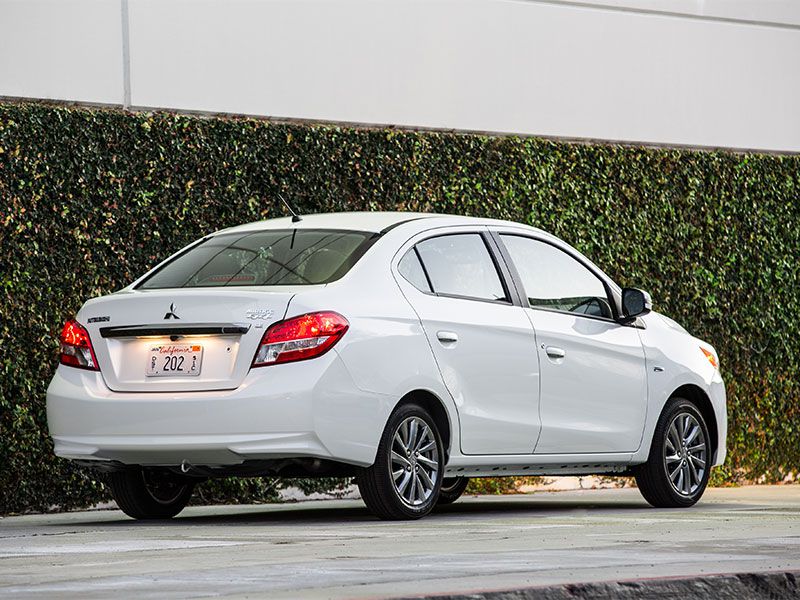Recent Articles
Popular Makes
Body Types
2017 Mitsubishi Mirage Road Test and Review
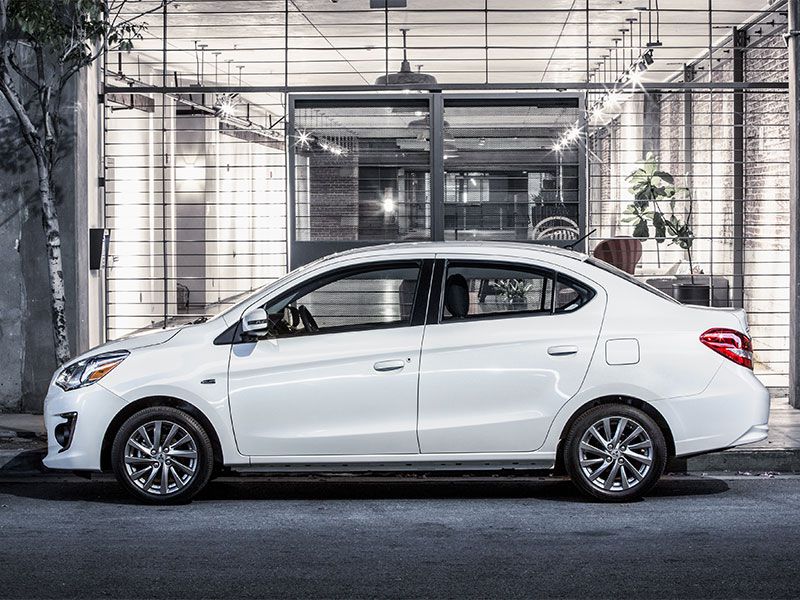
2017 Mitsubishi Mirage G4 exterior profile sedan
The Mitsubishi Mirage may be the most unloved car on the market, but it does have its supporters—though, admittedly, not many. Nevertheless, Mitsubishi is doubling down for 2017 by offering both an improved hatchback and a new sedan, called the G4. So is this a case of more to love or more to hate? Let’s take the Mirage G4 for a spin and find out.
Scorn that isn’t entirely deserved.
Most reviews on Autobytel.com are written using the royal “We”, but I’m writing this one in the first person singular—“I”—because I am one of the few people who hasn’t had nasty things to say about the Mitsubishi Mirage. When this car came out in 2014, it was tied to the whipping post by most of the automotive press, where it was pilloried for its undersized engine and Third World suspension tuning. Somehow, most writers seemed to miss the Mirage’s cheap price, long warranty, and excellent real-world fuel economy. The Mirage is indeed slow and a bit crude, but Mitsubishi never promised us a rose garden; instead the company promised us cheap motoring, which the Mirage delivers with a devotion to parsimony that must be admired, even if it can’t be enjoyed. There have been stretches of time where the Mirage has out-sold established competitors like the Toyota Yaris and Kia Rio, and word is that even Mitsubishi has been surprised by the car’s success.
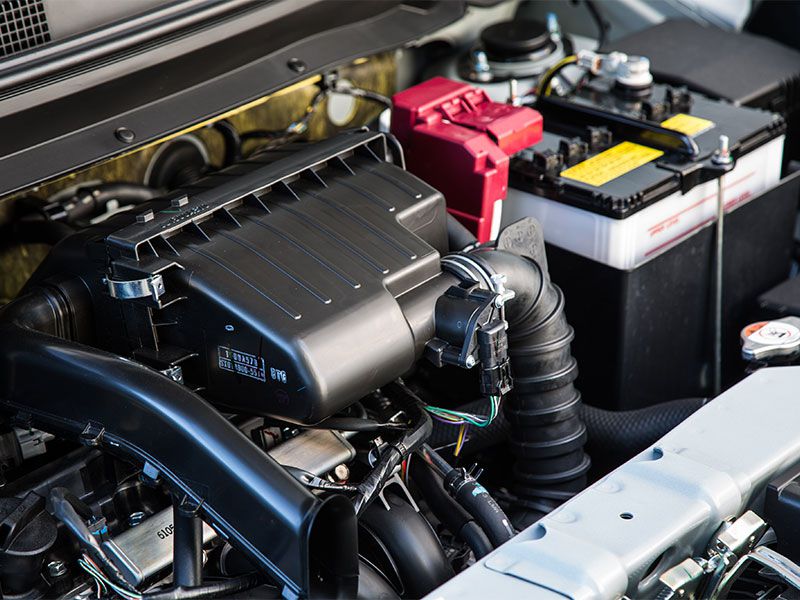
New and improved for 2017.
For 2017, Mitsubishi has made several key improvements to the Mirage. There’s a new 4-door sedan variant called the Mirage G4, which I drove for this review. The front end on both sedan and hatchback is new; the Mirage now has a proper grille that greatly improves its looks (though I have to wonder about its effect on aerodynamics, one of the Mirage’s fuel-economy secrets). The interior has been upgraded, and the engine gets a small increase in power (78 horsepower, up from 74). The hatchback gets an improved suspension and better brakes, though for reasons that cannot be understood by mere mortals, the G4 sedan doesn’t get this same setup.
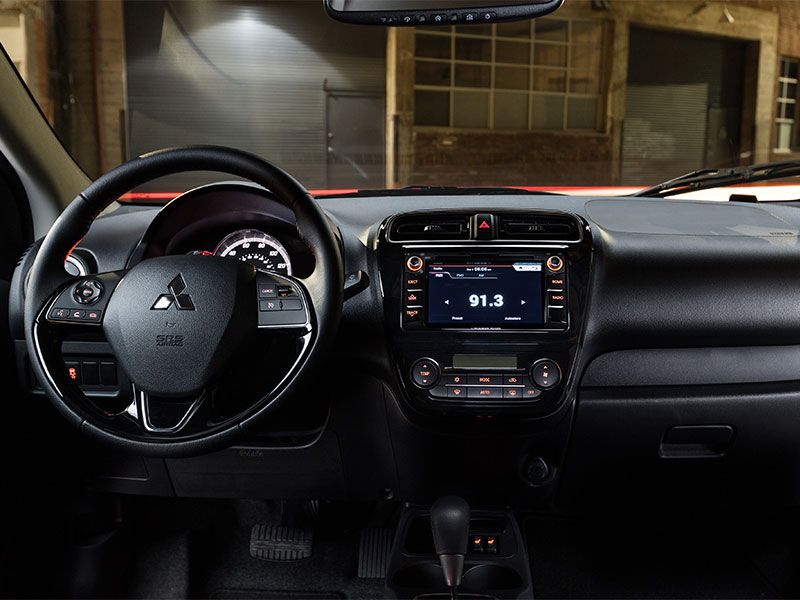
G4 sedan offers space galore.
As far as sedans go, the Mirage G4 acquits itself nicely. The back seat is simple and supportive, and offers a surprising amount of legroom—37.2 inches, slightly more than the competing Nissan Versa and nearly as much as the new Honda Civic, which is the benchmark for the larger compact sedan class. The trunk is decently sized at 12.3 cubic feet, with few obstructions and a big opening. I’ve driven bigger (and more expensive) sedans that didn’t offer nearly as much usable space inside.
The Mirage G4’s exterior shape isn’t terribly pretty, but kudos to Mitsubishi for providing a high roofline that delivers good back-seat headroom. I’m reminded of something said by K. T. Keller, president of Plymouth in the 1940s. He disdained the low rooflines of postwar cars and defended the Plymouth’s upright roofline, saying, “We build cars to sit in, not tinkle over.” (Tinkle wasn’t the word he used, but you get the idea.)
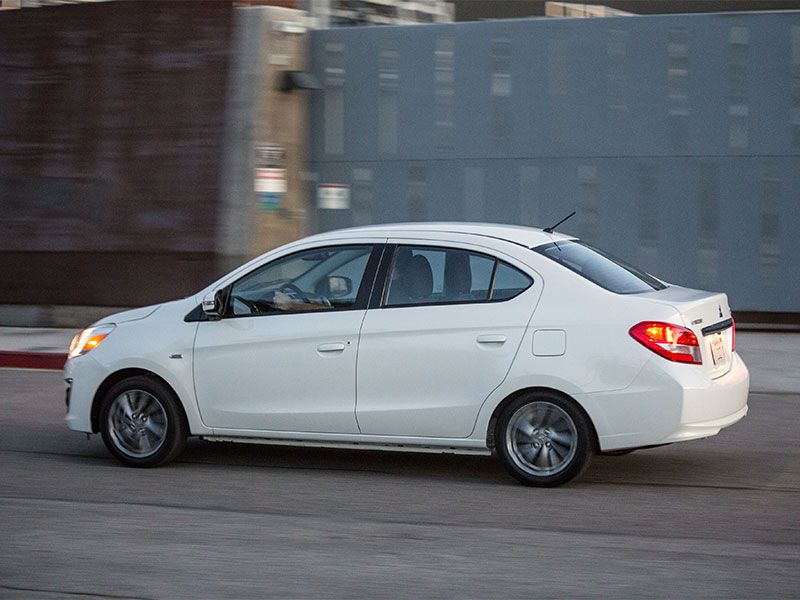
Yes, it’s slow. Yes, it’s noisy.
To be fair, the litany of complaints about the Mirage are not entirely without merit. The 1.2 liter 3-cylinder engine is tiny—most subcompacts use 1.5- or 1.6-liter 4-cylinder engines—and its 78 horsepower rating is little more than half of what competing cars offer. While the Mirage is very light—the hatchback weighs around 2100 lb. and the sedan around 2200; for comparison, a Honda Civic weighs well over 3000 lb.—that engine still has its work cut out for it. Merging onto a fast-moving freeway means making use of everything the engine has to offer to avoid ending up as the hood ornament on a Peterbilt.
Mitsubishi fits automatic Mirages with a continuously-variable transmission, or CVT, which does away with conventional gears and allows the engine to rev as high as it needs to deliver power. And rev the little Mirage’s engine does, enthusiastically and noisily (though I must say, 3-cylinder engines do sound very cool at wide-open throttle). The Mirage will accelerate to 75 mph and cruise there all day, but you can't be shy with the accelerator.
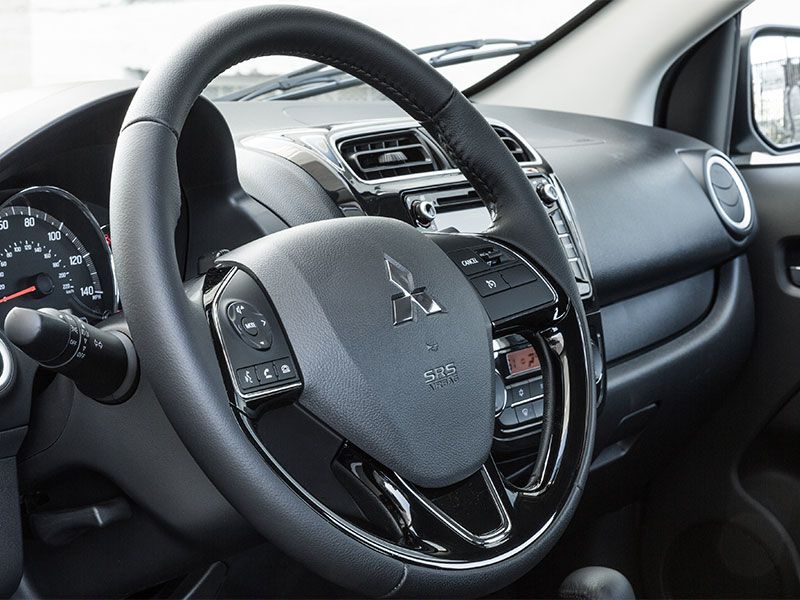
Fuel efficient? Should be.
With the engine working its little lungs out, you’d expect fuel economy to suffer, but the Mirage might surprise you. EPA ratings for the automatic Mirage G4 are 35 MPG city, 42 MPG highway and 37 MPG combined; hatchbacks are rated at 35/43/39 and manuals are a 2-3 MPG lower.
That said, the G4 I tested was thirstier than I expected: I averaged just over 31 MPG. I did spend an unusual amount of time in the stop-and-go traffic for which Los Angeles is so famous, and all of it with the A/C blasting. A couple of years ago, my wife and I borrowed a Mirage to use as our daily driver for six months (mostly to prove to the naysayers that when it comes to cheap cars, I am hardcore!). Over that time we averaged well over 41 MPG, and this with the very speedy Mrs. Gold doing more than her fair share of the driving. So what’s up with the Mirage G4 I tested? Is the trunk or that big new grille affecting the aerodynamics? Did slow traffic kill our fuel economy? Hard to say; we’ll have to see what real-world owners report on FuelEconomy.gov. (For the record, owners of 2014 and 2015 Mirage hatchbacks report low-to-mid 40s.)
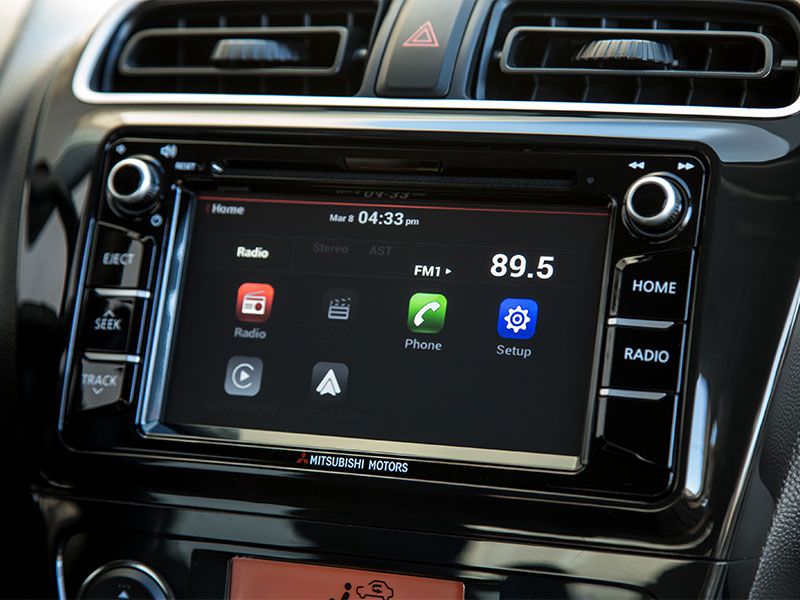
Ride and handling: Not a strong suit.
Another complaint about the Mirage was the way the suspension was set up: Mitsubishi tuned the car for Third World countries with Third World roads, which meant a super-soft suspension that could soak up potholes, ruts, and whatever else the negligible road maintenance of impoverished countries could throw at it. That also meant the Mirage leaned like a schooner in turns. Mitsubishi was a little evasive when we asked about the difference in tuning between the new Mirage G4 and the old Mirage hatchback, saying only that the car was tuned for US roads. As a seasoned Mirage driver, I didn’t feel much difference; the G4’s ride is a bit stiffer than I remember, and that seemed to magnify the imprecision of the steering, particularly at highway speeds. I didn’t mind driving the Mirage around town, but driving it down the freeway required constant small steering corrections, and that gets tiring. In my opinion, the Mirage makes a better suburban runabout than a long-distance cruiser.
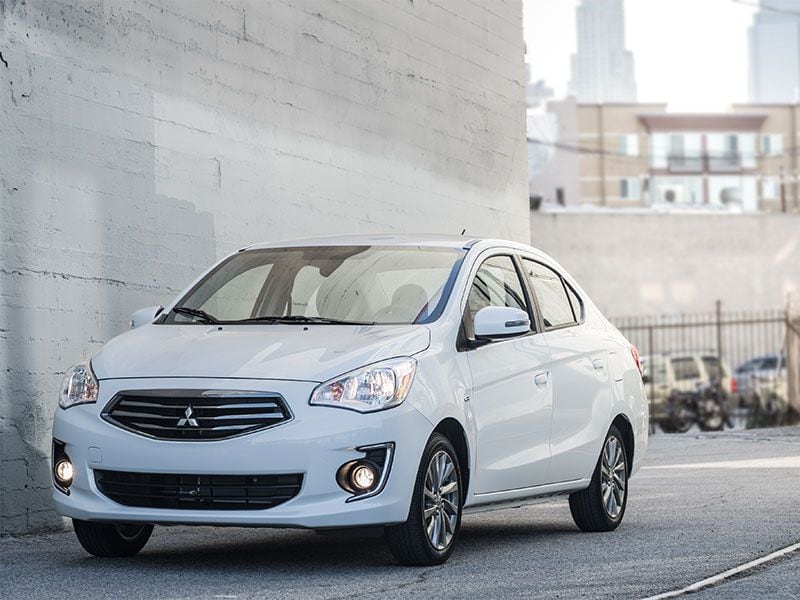
Photo by Mitsubishi
The Mirage’s ace in the hole...
One of the critical bits that car critics seem to miss is the Mirage’s epic warranty: 5 years/60,000 miles bumper-to-bumper. Those last three words are the important ones: You’ll hear car manufacturers crow about 10-year/100,000-mile warranties, but those usually only cover the powertrain (engine, transmission, and the bits that make the wheels turn). The Mirage has one of those too—10/100 on the powertrain—but it’s the long bumper-to-bumper warranty that should be of interest to buyers on a budget, because it means that if they take out a 5-year loan and drive the average 12,000 miles per year, they shouldn’t have to worry about repair costs until the car is paid off. Gas it, change the oil, don’t crash it, and if anything breaks, just take it back to the dealership.
